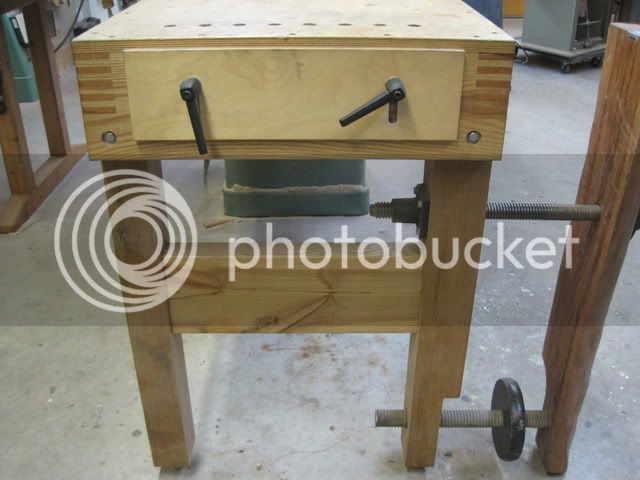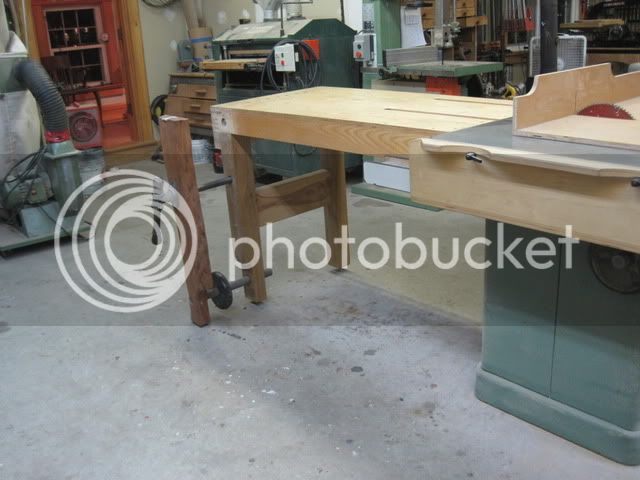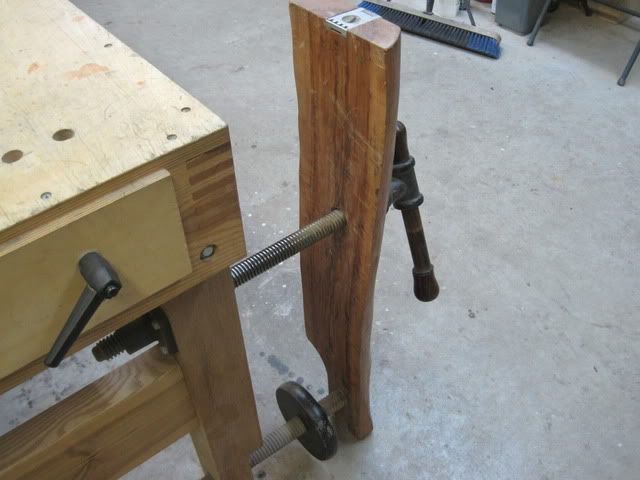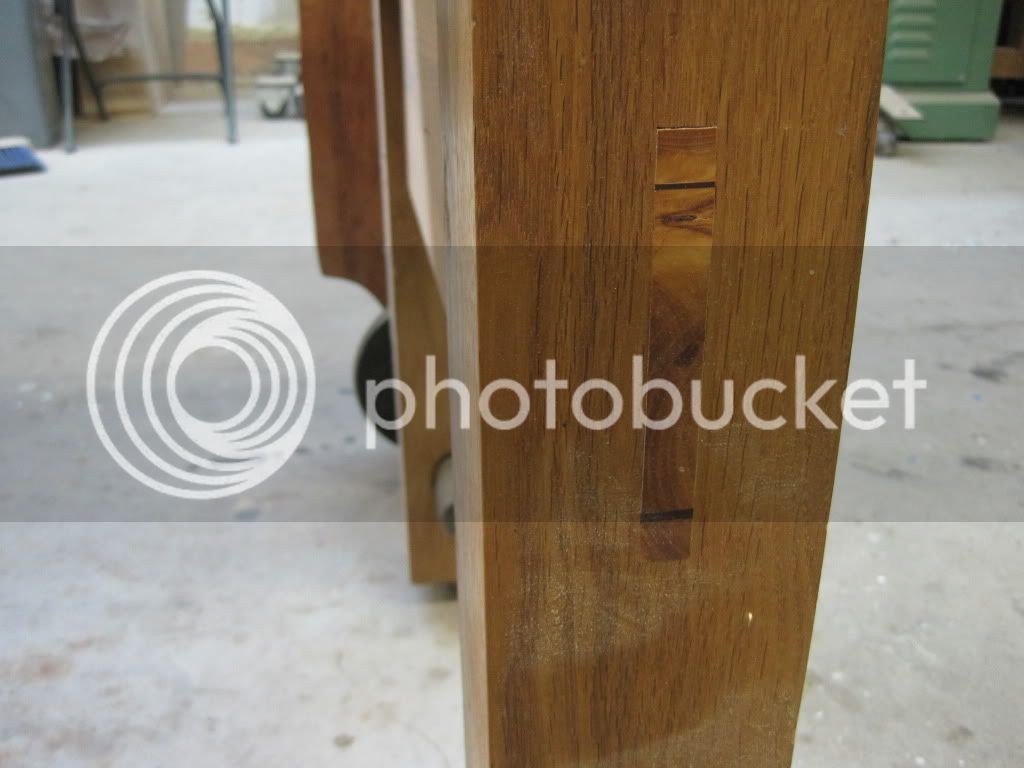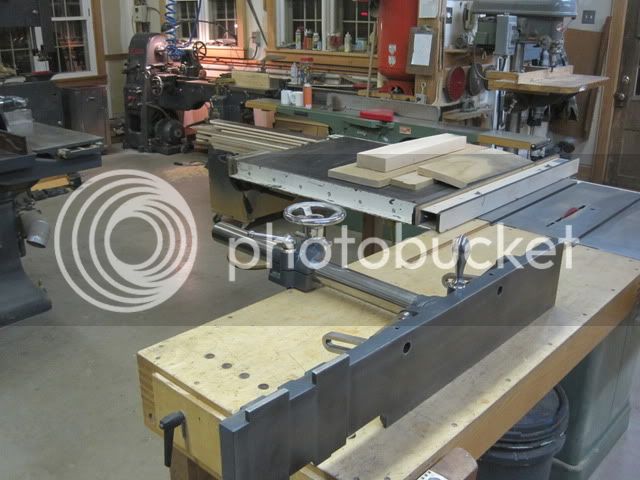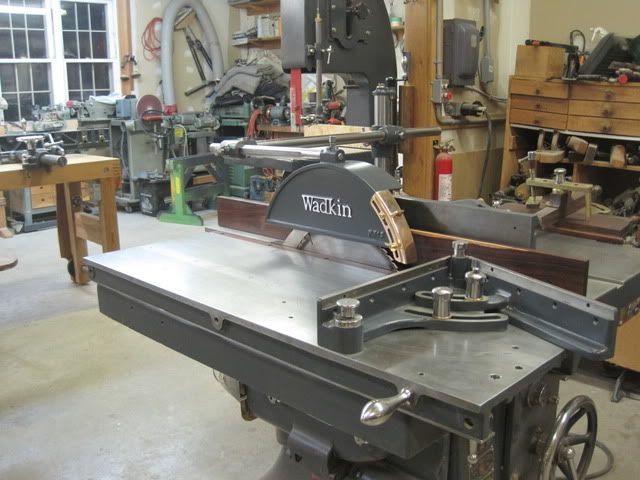Certainly will Andy, well-researched as usual =D>
I too like the 'keep a box of odds... everything becomes useful once every seven years'... It's true, as you will recall sending me the screw for my plough fence!
I think this is very much the history of the leg vice... shop made incl wooden screw, and pre-dating cast vices. I only became interested after reading Mr Schwarz making several and saying how good they are. So for me it was an investigation.
Jumps was over today and I think he was fairly impressed when I clamped a piece in the leg vice, gave the screw a slight tighten (I mean slight) then lifted the bench by the piece of scrap.
Forgot to mention, but for anyone planning making one, I did discover a few things that may be useful:
- assuming you make the leg first, then the vice face (beam), mark the distance from
centre of guide mortice to centre of screw hole. Make that a round number, and write it down somewhere safe. It will make life a lot easier when you come to making the holes in the vice-face. The reason I say centre of the guide mortice is the guide should be tight on width, but well-clear in height (maybe 3mm top and bottom). So measuring from top of mortice gets quite confusing, and you may end up paring a bit off mortice or guide later anyway. So, centre-to-centre and tattooed somewhere.
- make the hole in leg for screw nil clearance. It will go a very long way to minimising racking, and if it ends up too tight it's easy to take fractions off... can't put them back on of course. The hole in the beam needs to be oversize though - as the beam (face) needs freedom to tilt off vertical in use - that is very important as it gives a range of closing without moving the pin all the time.
- seal the guide with anything hard and nil-build ( a wipe-on), then scrub a candle over it.
- I suggest 2" stock for the face - I suspect less will be a bit bendy under the screw pressure.
If I think of anything else I'll post. And you might gather I didn't note the measurement between the 2 holes... we got there but I sure wish I had.
p.s. Kinsella - no plan sorry - I sketched some of the bits on the shop blackboard but otherwise did it in my head. If I could bother to learn Sketch-up

... but I could sketch it out old-style, pm me if interested in any particular bits.









